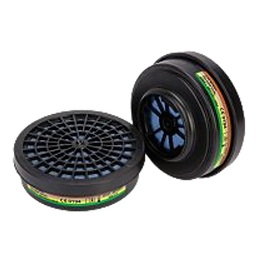0861 888 881
Respiratory Equipment in the Workplace: Breathing Safely Amidst Hazards
In the ever-evolving landscape of modern workplaces, ensuring the safety and well-being of employees is non-negotiable. Respiratory equipment plays a pivotal role in safeguarding workers against various airborne hazards they may encounter during their daily tasks. This article delves into the significance of respiratory equipment, its diverse applications, and the importance of proper selection, usage, and maintenance.
The Importance of Respiratory Equipment:
-
Airborne Hazard Protection: In numerous industries, workers face the risks associated with airborne contaminants such as dust, fumes, gases, vapors, and infectious agents. Respiratory equipment provides essential protection by preventing inhalation of these hazards.
-
Health Preservation: Long-term exposure to airborne pollutants can lead to respiratory illnesses and other health issues. Respiratory protection ensures that workers remain healthy and free from illnesses caused by hazardous substances in the workplace.
-
Safety Compliance: Regulatory bodies worldwide mandate the use of respiratory equipment in workplaces with airborne hazards. Compliance not only ensures legal obligations are met but also underscores an organization's commitment to employee safety.
Types of Respiratory Equipment:
-
Dust Masks: These disposable masks protect against dust, pollen, and non-toxic airborne particles, making them suitable for construction, agriculture, and woodworking.
-
Respirators: Filtering facepiece respirators (N95, N99, N100) and elastomeric respirators with replaceable cartridges provide protection against dust, fumes, and aerosols. They are common in healthcare, manufacturing, and construction.
-
Gas Masks: Gas masks equipped with specific cartridges protect against gases, vapors, and chemical hazards. They are essential in chemical industries and emergency response teams.
-
Powered Air-Purifying Respirators (PAPRs): PAPRs use a battery-powered fan to filter and supply clean air to the wearer, making them suitable for environments with high concentrations of hazardous particles or where extended use is required.
Selecting and Using Respiratory Equipment:
Choosing the right respiratory equipment involves identifying the type and level of hazard, understanding the equipment's protection factor, ensuring proper fit and conducting fit tests, and providing training on correct usage, care, and maintenance. Regular inspections, maintenance, and replacement of filters or cartridges are essential to ensure effectiveness.
Conclusion:
Respiratory equipment is a linchpin in modern workplace safety, offering protection against a wide range of airborne hazards. Employers who invest in and prioritize respiratory protection not only safeguard their workforce but also demonstrate their commitment to employee health and safety. It is a shared responsibility to ensure that respiratory equipment is readily available, correctly utilized, and meticulously maintained, guaranteeing that every breath taken in the workplace is a safe one.






